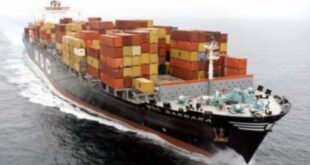 Shippers Guide is the learning page of MMS Plus. Here we answer the five W’s and H of several issues in the maritime and aviation industry. This week we’ll be discussing man overboard situation on ship and ways to tackle it
Shippers Guide is the learning page of MMS Plus. Here we answer the five W’s and H of several issues in the maritime and aviation industry. This week we’ll be discussing man overboard situation on ship and ways to tackle itWhat is Man overboard?
Man overboard is a situation wherein a ship’s crew member falls out at sea from the ship, no matter where the ship is sailing, in open seas or still waters in port.
A seafarer has to be very careful while performing his/her duties on board a vessel as it can never be taken for granted that a person cannot fall off the ship due to bad weather, swell in the sea, accidents, and negligence.
A man overboard is an emergency and it is very important to locate and recover the man overboard person as soon as possible as due to bad weather or rough sea, the crew member can drown or else due to the temperature of the cold water the person can get hypothermia.
What Is Hypothermia?
Hypothermia is a situation wherein there is an extensive loss of body temperature due to prolonged contact of the body with cold water, and the body’s normal metabolism and functions get affected. A person will get unconscious after 15 minutes in water with a temperature of 5 ̊ C.
Actions to be Taken during Man Overboard Situation
The initial and early sighting of the fallen crew plays a vital role in increasing the percentage of saving his/her life. The actions for a MOB mentioned below are extremely urgent and must be taken without any delay to save the life of the person who has fallen overboard.
- Shout ‘Man Overboard on Starboard/Portside’
- Change over to hand steering from auto and put the wheel hard over to the respective side (port or starboard)
- Release MOB marker from the side of the bridge wing to which MOB has occurred. This marker is buoyant and has a self-igniting light as well as a self-activating smoke signal
- Press the MOB button on the GPS to mark the position of the casualty for future reference
- Sound ‘O’ on the whistle (Three prolonged blasts). This is to let the Master and the crew know about the emergency. Supplement this with the appropriate ‘O’ flag
- Post extra lookout as soon as possible
- Sound the General Alarm on the ship’s whistle to alert everybody to proceed to stations. This is to ensure that if the crew has not understood the three prolonged blasts for MOB, they are alerted regardless and proceed to muster stations to assist in the recovery of the person
- Thereafter, announce the MOB situation on the ship’s PA system
- Inform the engine room of the situation and let them know that manoeuvring will be required
- Execute the Williamsons turn
- Keep a keen eye on the RADAR/ARPA and put the VHF on Channel 16
- Maintain a record of all the events in the Bell book
- Carry out Master’s orders
- The Chief Mate should take overall decisions based on deck concerning lowering survival craft etc
- The Third Mate ought to assist the Master on Bridge
- The officer in charge at the moment must send out an “Urgency signal” on all the communications systems to let ships in the vicinity know about the situation
- Keep the lifebuoy (MOB marker) insight
- The rescue boat should be manned adequately with enough personnel to carry out the rescue operation
- A portable handheld VHF must be carried by the officer in the rescue boat
- Once the person is rescued, the rescue boat must be picked up upon arrival close to the ship along with the lifebuoy and hoisted back
- Immediate first aid should be administered if required
- An ‘Urgency Signal’ must be sent out to cancel the last transmitted MOB alert
- Appropriate entries must be made in the Ship’s Logbook
The Master must carry out an enquiry concerning the MOB incident and all entries made in the Ship’s Logbook
The engines are not stopped immediately to keep the person away from the propeller. The same is the case for wheel hard over to the side of the casualty as it is done to keep the stern away from the casualty.
Screaming about the MOB at the instant that the mishap is realised is of paramount importance to use all manpower available for immediate use.
The lifebuoy also adds to the life-saving process as the smoke signal leaves a conspicuous mark by the day or night. It is also important to pick up the lifebuoy to not confuse any other ships passing by about the status of the MOB. They must not assume that there is a MOB in the vicinity and proceed towards helping the person when he has already been rescued.
Entries in the Ship’s Logbook hold great legal importance and should be made carefully. Always try to succeed in the first attempt as even a little delay can cause a human life.
The Williamson Turn
- Note the position of the ship
- Put wheel hard over to the side of the casualty
- After the ship has altered course by about 60 degrees, put the wheel hard over to the other side
- When the vessel is 20 degrees short of the reciprocal course, wheel on the midship
The Scharnow Turn
- Put the rudder over hard toward the person
- After deviating from the original course by about 240 degrees, shift the rudder hard to the opposite side.
- When heading about 20 degrees short of the reciprocal course, put the rudder amidships so that vessel turns onto the reciprocal course.
The Anderson Turn
- Stop the engines.
- Put the rudder over toward the person
- When clear of the person, go all ahead full, still using the full rudder.
- After deviating from the original course by about 240 degrees (about 2/3 of a complete circle), back the engines 2/3 or full.
- Stop the engines when the target point is 15 degrees off the bow. Ease the rudder and back the engines as required.
 MMS PLUS NG – Maritime, Aviation, Business, Oil and Gas News Online Newspaper with coverage in Maritime, Oil and Gas, Aviation, Power and Energy as well as Financial News
MMS PLUS NG – Maritime, Aviation, Business, Oil and Gas News Online Newspaper with coverage in Maritime, Oil and Gas, Aviation, Power and Energy as well as Financial News









